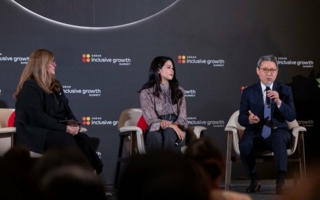17/08/2020 – Artificial Intelligence — auf Deutsch lesen
Nagarro: What kind of clothes will the consumers buy?
Artificial Intelligence can help fashion retailers in demand forecasting. Feroz Zaidi by Nagarro explains how it works.
Overstocking and understocking are problems that fashion retailers have been grappling with since decades; and till yet, there is no ready solution that can accurately predict, what piece of clothing a consumer is likely to buy.
- How is this problem addressed, what are the challenges in demand forecasting?
- How artificial intelligence is now enabling fashion retailers leverage the data already available with them, to bring a degree of accuracy in demand forecasting and to optimize their model further on?
Some Factors that cause an overstock, or an understock in fashion retail
• Minimum Order Quantities (MOQs) are dependent on factors such as material type, product style, its color and size, and the raw materials and components that go into it. Producers typically mark the MOQ level a little higher than their break-even cost. As a result, fashion retailers have no choice, but to order the MOQ level, even if it means ordering more than what they can reasonably sell.
• Fashion retailers order in excess as production lead times are sometimes long. They want to avoid a situation where shelves are empty, products are marked as ‘out of stock’ in their online store, and customers are left with no choice, but to order a similar product from a competitor. For a global fashion brand, reputation, customer loyalty and satisfaction are far more valuable than carrying on some unsold inventory.
• Unpopular sizes are the ones that are least ordered by online and walk-in customers. Even though merchandisers analyze sales figures, customers reactions and market trends while placing orders in evenly distributed sizes, it is the actual consumer off-take that finally determines the sizes that get sold out sooner than others.
• To provide their customers with an omnichannel experience, fashion retailers focus on a strategy that is based on the availability of the right product, at the right store and at the right time. However, sometimes there are challenges in transportation, stock control and warehousing which disrupt planned schedules. The problem gets further aggravated due to complexities arising from operational activities such as labelling, packaging, and reverse logistics; and as a result, customers are unable to buy what they want, when they want and from where they want.
Challenges that fashion retailers face in demand forecasting
Overstocking and understocking are real issues that fashion retailers face in their day-to-day work and these issues affect their profitability and competitiveness in the market. Each retailer understands the significance of maintaining an optimum level of inventory and uses the sources of information at its disposal – past data, internal records, homegrown tools and systems, industry trends, market news and social media feeds, and demand forecasting software solutions to arrive at some form of forecasting.
While these sources of information provide some direction and guidance to help fashion retailers make a demand forecast there are still many challenges that make things difficult. For example:
- Trends in color, print, style, patterns, and material change quickly and are difficult to predict.
- Some fashion trends are seasonal and short term in nature.
- New launches and promotions based on them cause spikes in demand, but all new launches are not successful.
- In a global setup, what works in one market might not work in the other. Even in a local market, a distribution pattern that works in one neighborhood, might not work in the other.
- Sustainability has become a major concern for fashion retailers as consumers have developed a liking for products that are organic, and their supply-chain is transparent.
Complex data points in the fashion retail eco-system
From the above, it is evident that there are too many data points in the fashion eco-system and some of these are quite complex. Each data point influences the process of demand forecasting in some way or the other and with conventional tools and technologies it is not easy to measure and quantify its impact. Even traditional methods deployed on historical data to build a forecasting model have their own limitations.
Fashion retail has huge data sets of structured and unstructured data
There are two types of data – structured and unstructured. Structured data typically comprises data that can be structured and stored into well- defined schemas such as databases. It can be from internal sources as well as external. Examples of internal sources are sales data, purchase data, inventory data and examples of external sources are government agencies, weather bureaus, macro-economic indicators, accredited third parties etc.
Unstructured data comprises data that neither conforms to a data model, nor has any structure. Data from emails, documents, presentations, and marketing campaigns are typical examples. Audio data and video files, images, drawings, sketches etc. are also classified as unstructured data. Unstructured data can again be from internal and external sources.
Fashion is close to the heart of many people and fashion-conscious people like talking about it on social media platforms where they like to share photographs, and express their views about trending styles, colors, and clothes. Every day there are millions of likes, comments, tweets, pins, Instagram and LinkedIn shares, and posts on fashion portals happening on different social media platform. The data from these sources is also classified as unstructured data.
From the above, one can see that there is a humongous volume of data that is available today and it has a bearing on what people are buying from fashion retailers and what they are likely to buy.
Artificial Intelligence is best suited to help fashion retailers in demand forecasting
Looking at this, one can see that while information is identifiable and can be analyzed from structured data, there are lot of trends and patterns beneath the unstructured data that are not easily identifiable using the software industry’s traditional problem-solving paradigm. It is due to this complexity in data, that artificial intelligence is best suited to build a demand forecasting solution for fashion retailers, since it uses a different paradigm to solve a complex problem.
Simply put, in this paradigm the AI master algorithm takes examples of different types of inputs and examples of different types of outcomes to create an algorithm that is used to solve the problem. Based on the type of data that is available and the type of problem that is being solved, this algorithm is then used to build and train a model that can be customized to gather specific insights from the data and generate the desired result that will help solve the problem.
Fashion retailers can leverage the data in their records and systems
Artificial Intelligence feeds on large volumes of structured and unstructured data and for best results, the more data that is available, the more accurate will be the results of the forecast engine.
For fashion retailers, this is not a problem as they have large volumes of datasets within their own systems that they can easily start using without much effort. These datasets typically comprise the product data, customer data, sales data and other relevant data that is in the ERP, CRM, and other data repositories. In case of global enterprises, the data resides across multiple geographies. Some fashion retailers do not realize that they also have large volumes of data sets – images of couture, fashion shows, styles, designs, clothing combinations, body measurements, product assortment and ordering, best-selling items, and other consumer data that they can start using right away for their forecasting needs.
Starting with Artificial Intelligence and reaching AI maturity in simple easy steps
Nagarro helps fashion retailers reach AI maturity in simple easy steps. The company enables the clients identify and make use of the data that is already lying in their organization. Fashion retailers will be able to apply artificial intelligence to build an accurate demand forecasting model, there are other use cases as well, where artificial intelligence can be applied to get meaningful insights from data.
About Feroz Zaidi:
Feroz Zaidi is an expert in Data and Analytics at the digital engineering company Nagarro with a focus on the apparel and fashion industry. He enables fashion brands augment their core IT systems and implement their transformation and modernization strategy, focussed on specialized digital initiatives and data driven solutions.





